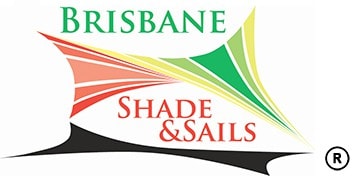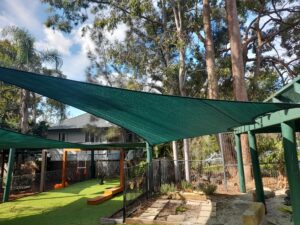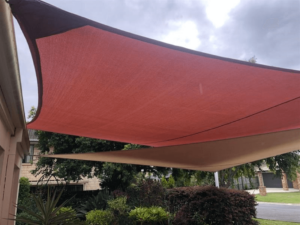Shade sails may appear flimsy at first glance. However, beneath their surface are hundreds of knits that allow them to stretch as far as your outdoor space requires. All the while, they block most of the incoming sunlight and harmful UV radiation. As such, they make for cost-effective alternatives to building a new roof or extending the existing one.
You can’t help but wonder what shade sails are made of. The material can’t be too dense to keep it from sagging and affecting its shade coverage, nor can it be too light to prevent it from fluttering under light to moderate breeze. Well, wonder no more because we’re here to satisfy your curiosity.
High-Density Polyethylene
Shade sails are manufactured from various materials, but not all can be considered really durable. Canvas was a widely used material in ancient times, but the thickness of canvas yarns meant that the shade fabric could get heavy. Additionally, the lack of waterproofing on natural canvas meant rainwater could leak past the fabric and drop on people’s heads.
Today, most residential and commercial shade sails in Brisbane are made of high-density polyethylene (HDPE). If it sounds familiar to you, that’s because HDPE is one of the most widely used plastics. It’s formed into just about anything from plastic bottles to pipes.
As its name suggests, HDPE is a variant of polyethylene with the highest density (0.941 – 0.965 g/cm3) of its kind. Although this makes the material less flexible, it compensates for this drawback with greater impact and tensile strength.
Furthermore, manufacturers work around the lack of flexibility through knitting instead of fashioning the shade cloth fabric as one piece. The process entails weaving monofilament HDPE threads into a series of interlocking loops. The result is a budget-friendly shade sail that can be set up to form a wide range of shapes depending on your shade needs.
Our two offerings – Comshade® for residential applications and Monotec® (specifically the 370 series) for commercial ones – are examples of HDPE shade sail fabric. Comshade® fabric is a popular option for homes, as its adequate sun protection means homeowners can enjoy their outdoor spaces even on the hottest days.
Meanwhile, Monotec® shade cloths are designed with durability and longevity in mind. Business staff will rarely have time to re-tension the fabric, let alone repair the damage done by blatant vandalism. As such, the cloth must be tough enough to resist most forms of damage, including strong winds.
Polytetrafluoroethylene
Polytetrafluoroethylene (PTFE) is another kind of shade cloth material. You probably know it more as Teflon™, but because it’s a trademark, we’ll continue to refer to it by its acronym.
Similar to non-stick pans, PTFE shade sails benefit from the material’s low coefficient of friction (one of the lowest among solids). In other words, rainwater will slide off the fabric with ease. This definitive property is made possible by PTFE’s molecular structure, which repels substances with polar molecules such as water.
The downside is that this shade cloth fabric is a highly niche product. Making enough PTFE isn’t as easy as the available supply of non-stick pans makes it seem. Between the material’s high melting point and shrinkage rate, manufacturers need costly specialised equipment to produce it, let alone form into custom shade sails.
We can offer PTFE shade sails should you prefer it, but our available options employ UV-stabilised monofilament PTFE threads for stitching. Besides its non-stick advantage, the thread shares the polymer’s ability to retain its strength despite constant UV exposure. Keep in mind that UV intensity varies throughout the day, more so with the local climate.
Conclusion
The best shade sail isn’t necessarily one with the highest level of protection. Cost and ease of maintenance should also be taken into account. Residential and commercial property owners can find knitted monofilament HDPE shade cloths held together with PTFE stitching to satisfy their requirements.





